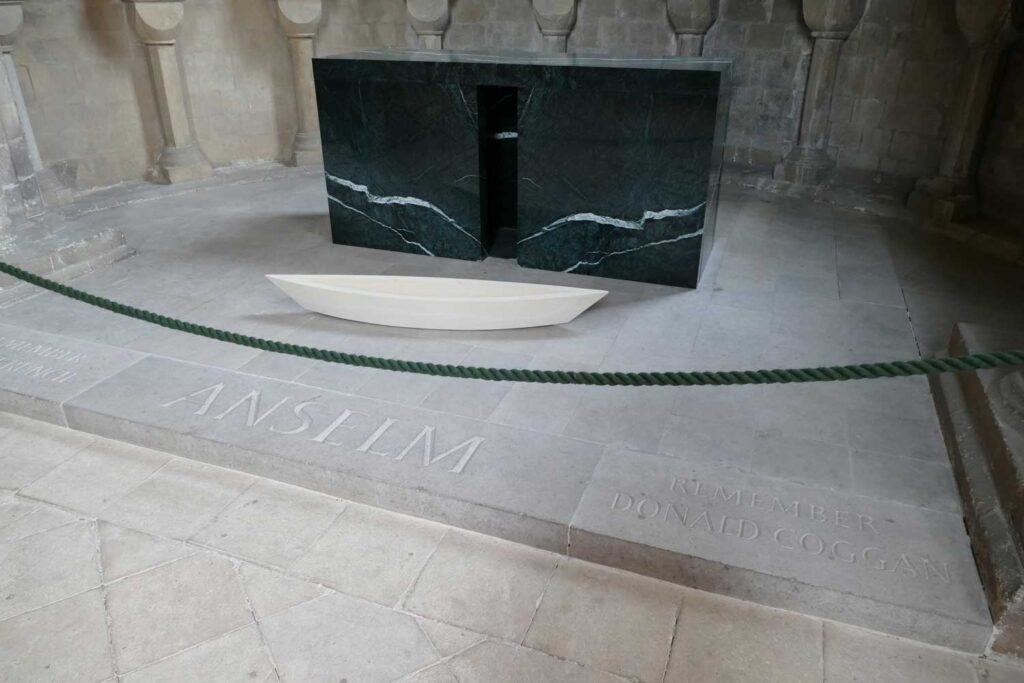This twelfth century chapel was originally dedicated to St Peter and St Paul. Following Anselm’s death in 1109 he was translated and buried in the cathedral close to the resting place of Archbishop Lanfranc. His remains are believed to have been relocated to this chapel during the rebuilding and reorganisation of the cathedral in the 1170s, after which the chapel became known as St Anselm’s Chapel. In 1888 major restoration work took place to the chapel and was instrumental in uncovering the twelfth century wall painting of St Paul in the north alcove. Canon Scott Robertson described in an article the following year how “A new pavement of HoptonWood stone Hopton Wood Stone has already been laid down, and the chapel will soon be an example of most perfect ‘restoration’.” This is the light (coloured) variety of Hopton Wood Stone. The chapel still bears this stone floor beneath the altar that is described below.
The Altar of St Anselm
Designed by Stephen Cox
On the 21st April 2006 there was a special mass held to mark the consecration of a new altar in the Chapel of St Anselm in the cathedral crypt. Anselm was the archbishop of Canterbury Cathedral from 1093 to 1109. During his primacy the eastern end of the cathedral was considerably remodelled and the length of the building nearly doubled. Renowned as an influential theologian, philosopher and statesman of his time he was canonised in about 1170 and declared a doctor (or teacher) of the church in 1720. The marble altar was a gift from the people of Regione Autonama Valle d’Aosta. Weighing in at twenty tonnes the altar was assembled in the chapel from nine separate pieces of stone because, according to its creator, it was too heavy to be one piece.
Anselm was born in the northern Italian town of Aosta near to the borders of France and Italy in the Valle d’Aosta within the Italian Alps. The town is on the main pilgrimage route between Canterbury and Rome known as the Via Francigena. The valley has been the centre of an important quarrying industry, which has seen the distinctive green marbles called Verde D’Aosta exported to destinations around the world. Verde D’Aosta is not a true marble in geological terms but rather an ophicalcite, a stone containing serpentinite blocks with white calcite veins. Intense deformation, deep burial and hydrothermal activity account for the fractured appearance of the rock and for the decorative veining.

Geoff Downer 2019
